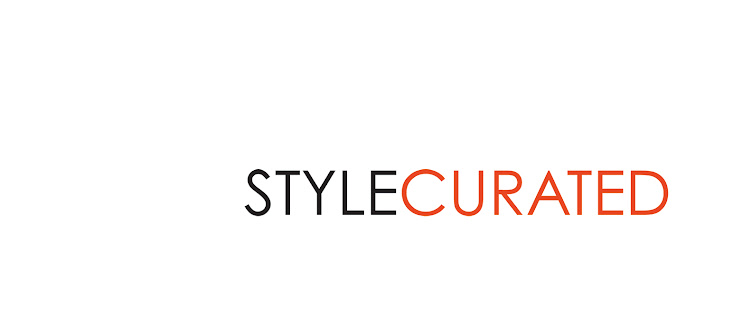Born to describe a subculture of modern jazz enthusiasts in 1960s London, the term "Modernist" morphs into a movement encapsulating all things "believed to be popular, fashionable or modern" [wiki]. With growing affluence and an increasing influence of music and art, "Mod" style surfaces, breeding a new era of 'cool kids.' Between 1960 and 1973 a mixed genre of cultural and political stimulants, variable trends and a new generation of designers fuel thoughts that "fashions of the 1960s were legendary for their energy, their ingenuity and their enduring appeal" [MCNY]. On view through April 1, 2018, the Museum of the City of New York (MCNY) showcases evidence of "Mod" style in the US over a transformative 13 years. Keep reading for a look inside Mod New York: Fashion Takes a Trip...
Entryway to the Mod New York exhibit
Co-curators Phyllis Madison (curator of MCNY's costume collection) and Donald Albrecht (curator of architecture and design) feature 70 garments (primarily drawn from the museum's costume collection), organized across four main areas--First Lady Fashion, Youthquake, New Bohemia and New Nonchalance. Hanging streamers likening vertical blinds separate the distinct sections. Shoes, accessories and other media are interwoven throughout the space, including several high jewelry pieces on loan by Tiffany and Cartier (edited by Judith Price, president of the National Jewelry Institute). A particular standout is the Figural Brooch by Donal Claflin for Tiffany & Co (1967)--what an uncharacteristic piece for the brand!
First Lady Fashion: [L] Norman Norell day ensemble (1960) // [R] Sarmi evening dress (1961)
Stepping into the introductory gallery, a Sarmi evening dress worn by Jacqueline Kennedy to the 1961 inaugural ball, a mis-matched patchwork dress with printed overlay by Geoffrey Beene (1968), a bright yellow + pink vinyl dress by Tiger Morse (1965) and other style samples summarize the exhibit's evolutionary span. Jackie Kennedy opens the era of 60s style, touting a 'sophisticated simplicity.' Moderately conservative and undeniably formulaic, the pearl necklaces, muted colors and pillbox hats of 1960 to 1963 are woefully inspired by refined French style.
A taste of 'New Bohemia' ; [center] Patchwork dress with striped and printed overskirt Geoffrey Beene for Beene Bazaar
Breaking from the structure and muted colors, 1964-1966 sees a rise in skirt lengths, bold colors and youth-targeted attire. Miniskirts and a modified attitude move "Mod" beyond convention and uniformity. Then editor-in-chief of Vogue, Diana Vreeland, coins the term Youthquake as youth-targeted boutiques opened in Carnaby Street and Kings Road in London, followed by Paraphernalia on Madison Ave. in 1965. The fun and flirty fashions of Mary Quant and Betsey Johnson make a strong showing at Paraphernalia and on the street during this period.
Timeline : 1960-1973
A New Bohemia is conceived by writer/photographer John Gruen in 1967 as a sense of rebellion becomes evident in the mismatched motifs, psychedelic patterns and unusual materials that surface. Between 1967 and 1969, bold African prints gain popularity and black models come onto the scene as the "Black is Beautiful" movement emerged. Thurgood Marshall was appointed the first African-American Supreme Court Justice and the assassinations of Martin Luther King Jr. and Robert F. Kennedy combined with the moon landing, LBGT demonstrations at the Stonewall Inn and Anti-Vietnam war protests erupted in a cosmic style revolution. Flowing dresses and floral pieces inundated the fashion scene through the likes of Norman Norell and Elin Daggs.
Installation View 'First Lady Fashion'
Postured as the fashion hangover, the New Nonchalance (1970-73) reverts to a simpler, quieter aesthetic. Menswear-adapted styles such as Ralph Lauren's pantsuits, Bill Blass' jumpsuit and YSL's "Le Smoking" turned heads as women in the workforce trade in their dresses and suit up. Women's lib by day and disco divas by night, American fashion made its mark during these tumultuous times.
[L] André Courrèges top + trousers (1963) // [R] Mainboucher Evening ensemble (F/W 1964)
While the exhibit presents an easy walk-through for capturing an eyeful of colorful clothing, a more in-depth read of the signage imparts a view into the politics and progress that became infused in the sense of style at the convergence of elite elegance, the Space Race, the Civil Rights movement and the Hippie generation. Unlike other exhibits glorifying the 60s and 70s, Curators Madison and Albrecht segment the style progression leading up to the 'Psychedelic 60s' and the less-memorable aftermath. All in all, Mod New York: Fashion Takes a Trip presents fashion-forward look into a tumultuous time and its tasteful transformation of style.
New Nonchalance suit sets
Installation view 'New Nonchalance'
Installation view 'Youthquake'
Tres Chic!
Target....
Golden!
Installation view 'New Bohemia'
Up Close...
'Black & White Dance' hosted by Truman Capote

















No comments:
Post a Comment